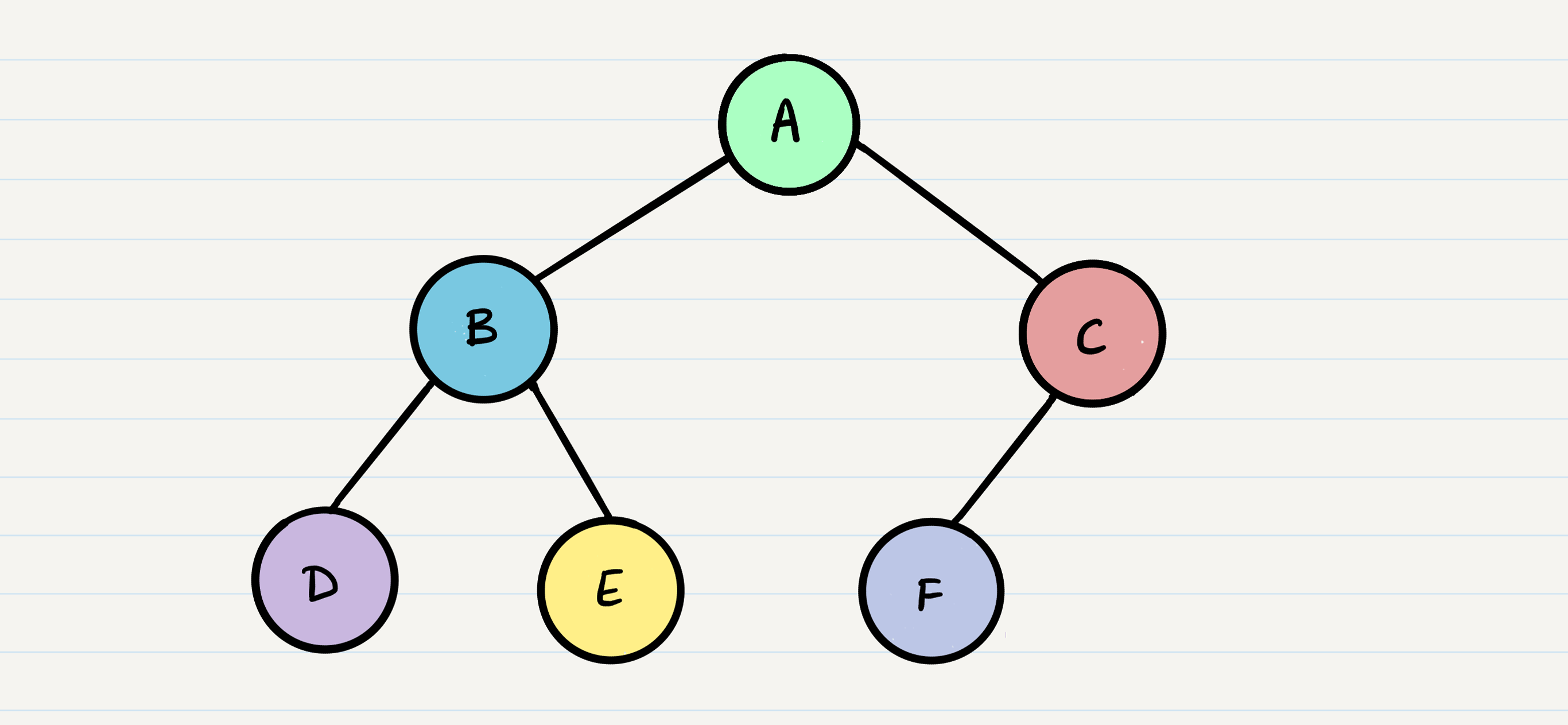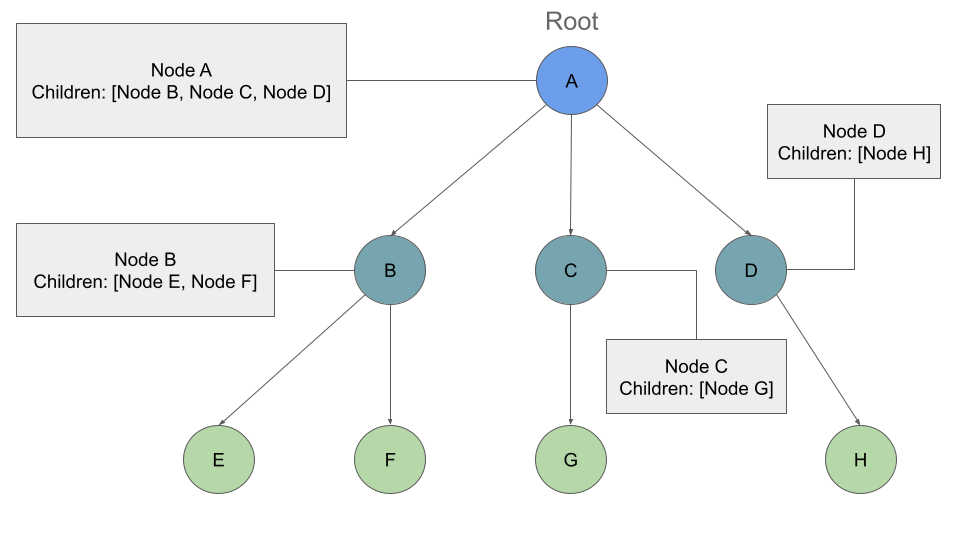Trees
- Node - A Tree node is a component which may contain it’s own values, and references to other nodes
- Root - The root is the node at the beginning of the tree
- K - A number that specifies the maximum number of children any node may have in a k-ary tree. In a binary tree, k = 2.
- Left - A reference to one child node, in a binary tree
- Right - A reference to the other child node, in a binary tree
- Edge - The edge in a tree is the link between a parent and child node
- Leaf - A leaf is a node that does not have any children
- Height - The height of a tree is the number of edges from the root to the furthest leaf
Traversals An important aspect of trees is how to traverse them. Traversing a tree allows us to search for a node, print out the contents of a tree, and much more! There are two categories of traversals when it comes to trees:
Depth First Breadth First Depth First Depth first traversal is where we prioritize going through the depth (height) of the tree first. There are multiple ways to carry out depth first traversal, and each method changes the order in which we search/print the root. Here are three methods for depth first traversal:
- Pre-order: root » left » right
- In-order: left » root » right
- Post-order: left » right » root
It’s important to note a few things that are about to happen:
The program will look for both a root.left and a root.right. Both will return null, so it will end the execution of that method call
D will pop off of the call stack and the root will be reassigned back to B
This is the heart of recursion: when we complete a function call, we pop it off the stack and are able to continue execution through the previous function call
- Breadth First Breadth first traversal iterates through the tree by going through each level of the tree node-by-node. So, given our starting tree one more time:
 Our output using breadth first traversal is now:
Our output using breadth first traversal is now:
Output: A, B, C, D, E, F
Traditionally, breadth first traversal uses a queue (instead of the call stack via recursion) to traverse the width/breadth of the tree. Let’s break down the process.
Here is the pseudocode, utilizing a built-in queue to implement a breadth first traversal.
ALGORITHM breadthFirst(root) // INPUT <– root node // OUTPUT <– front node of queue to console
Queue breadth <– new Queue() breadth.enqueue(root)
while breadth.peek() node front = breadth.dequeue() OUTPUT <– front.value
if front.left is not NULL
breadth.enqueue(front.left)
if front.right is not NULL
breadth.enqueue(front.right) # K-ary Trees If Nodes are able have more than 2 child nodes, we call the tree that contains them a K-ary Tree. In this type of tree we use K to refer to the maximum number of children that each Node is able to have.
Breadth First Traversal
Traversing a K-ary tree requires a similar approach to the breadth first traversal. We are still pushing nodes into a queue, but we are now moving down a list of children of length k, instead of checking for the presence of a left and a right child.

Adding a node
Because there are no structural rules for where nodes are “supposed to go” in a binary tree, it really doesn’t matter where a new node gets placed.
Binary Search Trees
A Binary Search Tree (BST) is a type of tree that does have some structure attached to it. In a BST, nodes are organized in a manner where all values that are smaller than the root are placed to the left, and all values that are larger than the root are placed to the right.
